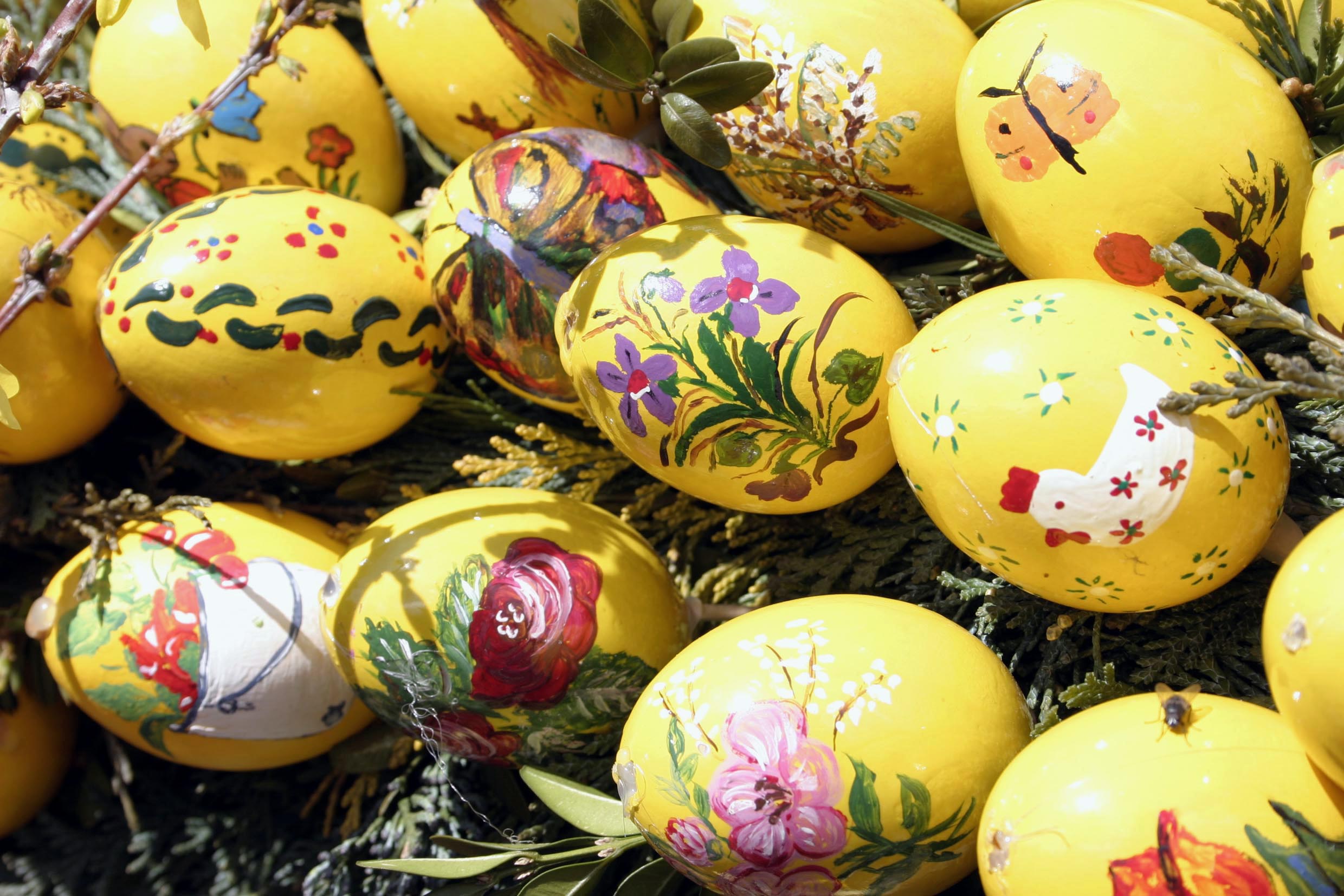Many of Easter traditions revolve around eggs. In many countries, it is customary for children to participate in Egg Hunts and Rolls. Brightly colored eggs are hidden in parks and gardens and children compete to find them and put them in their baskets. Egg rolling is also very popular. It consists in rolling hard-boiled eggs across grassy surfaces, often with a spoon. The egg that travels the furthest without breaking wins. The most famous egg roll in the world takes place in the White House every year since 1878 on Easter Monday. There is a lottery to participate, so that all children have an equal chance. Eggs are also used in the kitchen, and one specific recipe is that of deviled eggs. These are hard-boiled eggs that get cut in half and filled with mayonnaise, mustard and spices. Another common delicacy prepared for Easter is the hot cross bun, which is usually eaten on Good Friday. It is a spiced (often with cinnamon) sweet roll, that is filled with dried fruits. The name comes from the fact that it is enjoyed hot and it has a cross on top, commemorating Christ’s sacrifice.
Molte tradizioni pasquali ruotano intorno alle uova. In molti Paesi è consuetudine che i bambini partecipino a delle cacce e delle gare di rotolamento uova. Uova dai colori vivaci vengono nascoste nei parchi e nei giardini e i bambini fanno a gara per trovarle e metterle nei loro cestini. Anche l’arrotolamento delle uova è molto popolare. Consiste nel far rotolare le uova sode su superfici erbose, spesso con un cucchiaio. Vince l’uovo che viaggia più lontano senza rompersi. L’Egg Roll più famosa del mondo si svolge alla Casa Bianca ogni anno dal 1878, il lunedì di Pasqua. Per partecipare c’è una lotteria, in modo che tutti i bambini abbiano le stesse possibilità. Le uova vengono utilizzate anche in cucina e una ricetta specifica è quella delle uova alla diavola. Si tratta di uova sode tagliate a metà e riempite di maionese, senape e spezie. Un’altra prelibatezza comune preparata per la Pasqua è l’hot cross bun, che di solito viene mangiato il Venerdì Santo. Si tratta di un panino dolce speziato (spesso con cannella), che viene riempito con frutta secca. Il nome deriva dal fatto che viene gustato caldo e ha una croce in cima, che ricorda il sacrificio di Cristo.

